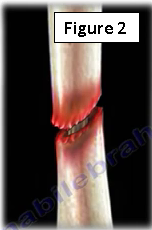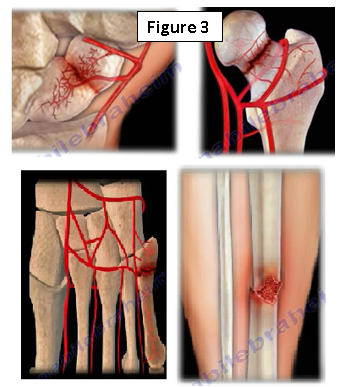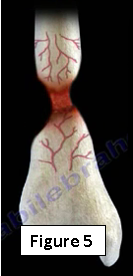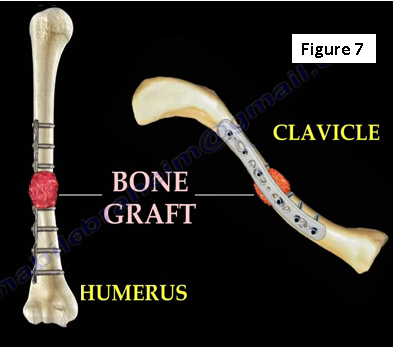In a fracture nonunion, the healing process of the fracture stops. Failure of fixation of a fracture usually indicates a nonunion (Figure 1).
Nonunion may be caused by excessive motion of the bony ends and incomplete healing of the fracture (Figure 2). The fractures need stability to heal.
Without a good blood supply and the growth of new blood vessels, it is difficult for the new bone to form and for the fracture to heal. Fracture needs an adequate blood supply to heal!
Fractures at risk for nonunion includes the scaphoid, proximal femur (femoral neck fracture), fifth metatarsal (Jones Fracture), and open fractures (Figure 3). The tibia is a common bone to develop nonunion.
Types of Nonunions:
Hypertrophic nonunion is also known as elephant foot (Figure 4). It is vascular with abundant callus and results from inadequate immobilization or fixation.
Atrophic nonunion are avascular, meaning there is no blood supply (Figure 5). The ends of the fragments have become osteoporotic and atrophic. The body is unable to heal this fracture and requires bone grafting or a bone graft substitute, in addition to stabilization of the fracture.
Common Causes that may lead to nonunion:
The common causes that may lead to the nonunion of a fracture are smoking, diabetes, obesity, unstable fixation, and infection. Open fractures and severe fracture displacement are at risk of developing a nonunion.
Cigarette smoking significantly reduces the bone healing rate (Figure 6). Pseudoarthrosis could be five times more common in smokers. It is better to check vitamin D levels and albumin levels when dealing with fracture nonunions.
Treatment of Nonunion:
Conservative treatment may be helpful yet it's controversial. Conservative treatment includes bracing, electrical stimulation and longer time of immobilization. Most nonunions require surgical treatment. If the ends of the bone appear avascular, then bone grafting may be necessary. The goals of surgical treatment are to restore vascularity of the bone, provide stability of the fracture with a plate or a rod, and create a healing response by using a bone graft or a bone graft substitute. For example, the ideal treatment for humeral shaft nonunion is a plate and bone graft (Figure 7).
For more information on nonunion fractures, follow the links below:
https://www.youtube.com/watch?v=9FZyTC04gEg
https://www.youtube.com/watch?v=5Mh_w0JP1Rc
https://www.youtube.com/watch?v=5SJMaGipw70
https://www.youtube.com/watch?v=ZgN3wQfOE2w
For more information, visit my YouTube Channel:
https://www.youtube.com/user/nabilebraheim






